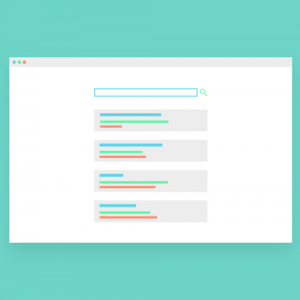There are few strategies in the online marketplace that are as essential and as quickly evolving as search engine optimization, known in the industry as SEO. Google and other search engines are constantly updating the algorithms that are responsible for ranking search engine results, and recent technological innovations such as smart watches and Amazon Echo are set to change the game even further.
In order to remain competitive, webmasters must be diligent in their observation of the current online marketing landscape and predicted SEO Trends. Read on to find out about a few of the trends industry experts are already predicting.
SERP features

Structured Data
Although Google has never officially confirmed that structural data functions as a ranking signal, this data does play a large role in SERP rankings like knowledge graph panels and rich snippets. Careful HTML formatting allows search engines like Google to interpret content in such a way that it can be readily displayed in these SERP features, which can in turn increase click-through rates by as much as 30%. Forward-thinking webmasters already know that this trend toward SERP features and away from native rankings is unlikely to change anytime soon and are already taking steps to format their sites accordingly.
Increased Emphasis on Speed
Speed has always been king when it comes to ranking signals and UX factors. Google’s search engine ranking system is designed to give priority to pages that are able to load in three seconds or less, but when it comes down to the line, faster is always better. That’s why Google has already integrated page speed tests into its WebSite Auditor, which also provides helpful information and advice about any factors that might be slowing down a page’s load speeds.
Remaining Relevant

That’s not the only tool Google has up its sleeve, though. A tool called RankBrain allows the search engine to further analyze its best performing results, searching for similarities between them and adding query-specific ranking signals for given terms. So, the bottom line is, a website’s content must be genuinely comprehensive in order to ensure high search engine rankings on Google in 2018.
The best way to ensure that a given page meets these increasingly stringent specifications is to research web pages that are already ranking high and to look for what kinds of features they all share. It would be extremely difficult and tedious to do all that work manually, but thankfully, the WebSite Auditor offers a more practical solution. Simply open up the Auditor and select TF-IDF under Content Analysis to access an app that will analyze Google’s 10 top-ranking web pages and will calculate a score for each term based on its prevalence and relevance.
Voice Search

Browsers who are using voice search instead of traditional type search use normal, conversational sentences when they speak to their devices, not the bizarre query lingo more commonly seen in type searches. That means webmasters who want their pages to remain competitive in tomorrow’s SEO landscape must begin to establish new keyword routines accordingly. Rank Tracker can be extremely helpful to those who are trying to wrap their minds around what kinds of questions voice searchers are most likely to pose, but webmasters themselves must take the initiative to begin incorporating keywords and content appropriately.
Mobile Devices
With more than half of all Google searches originating from mobile devices, mobile-friendliness has become a ranking factor that can no longer be ignored. In fact, 2018 could well be the year that heralds the advent of mobile-first indexes, although a specific timeline for these mobile-friendly changes has yet to be released.
The first step webmasters should take toward ensuring that their sites remain competitive is to check each page for mobile-friendliness. This can be done via Google’s mobile test, which is easily available in WebSite Auditor and can be found by selecting page usability (mobile) under technical factors. Of course, the Auditor points out any problematic factors, but it also offers helpful advice on how to fix them.
The Rise of Linkless Backlinks

Google and other search engines are able to associate linkless mentions with brands, allowing them to be used to determine a site’s authority and validity without any backlinks at all. This trend is already beginning to unfold in the 2017 SEO landscape, as Bing’s senior product manager has already confirmed that this search engine has begun to consider unlinked mentions in its search algorithms. It may go without saying, but most industry insiders have reason to believe that Google is already using this technique as well.
While traditional backlinks can be checked using a backlink checker, linkless mentions require a different type of monitoring tool. Awario is arguably the best app out there to meet this increasingly essential need, as it offers a real-time index of the web and utilizes a Reach metric, which allows its users to see mentions ranked according to their perceived authority.
Personalized SERF
This article has already discussed the matter of increasing SERF use, but to complicate matters further, search engines are also beginning to use increasingly personalized SERF features that use user information like locations, search histories, and personal interests to rank these features. In fact, Google, Yahoo, and Bing have already been increasing the ways in which search results are being personalized according to user information. Back in 2011, up to 50% of Google searches were already being personalized and that statistic has only continued to rise in the following years.
Luckily, webmasters who are privy to this information don’t have much to worry about as personalization certainly doesn’t have to work against them. Once a browser searches for a target keyword, webmasters must strive to appear among the initial results for unbiased SERP features. If the browser clicks on that particular listing, it will help increase chances that his or hear subsequent searches will also include that site among their top results.
The most effective step that webmasters can take toward ensuring that their sites will appear under that first unbiased search is to make sure that their rank tracking is as accurate as possible. Rank Tracker checks depersonalized rankings by default, but those who are attempting to check native search results and SERF features using their browsers must ensure that they use Incognito/Private mode when they search to see where their pages fall.
Video and Image Searches

There are several new startups already entering the marketplace that focus on improving the recognition of visual elements within videos and images. Google has already acquired both Moodstocks and Eyefluence, and these acquisitions seem to promise an improvement in the way that search engines are able to incorporate visual elements in their SERF and native search results in coming years. Webmasters who want to be prepared for these upcoming changes must begin to consider how images and videos will be used in the future to create more sophisticated search engine algorithms now.












